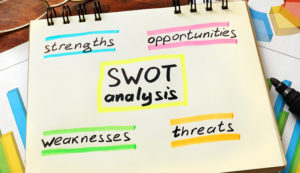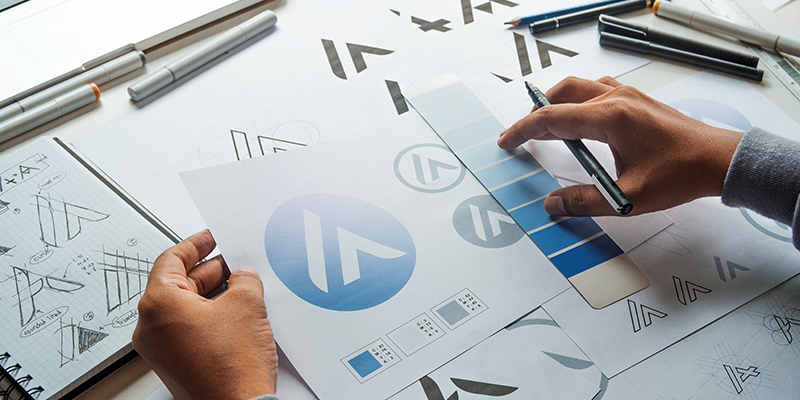Brand identity design is a key element in your marketing arsenal, both on- and offline. Unfortunately, not every business knows how to take the right approach to design its brand identity.
Defining Brand Identity Design in Marketing
What is brand identity? Simply put, brand identity refers to all the visual elements of a company that it uses to project its desired image to customers. It differs from branding, which is the act or practice of framing a specific brand. It also differs from brand or brand image, which is how the general public perceives the company.
The following are brand identity elements your business should consider:
- Brand name
- Logo design
- Color palette
- Typography
- Shapes and images
- Language used in ads
- Interactions with consumers
The Importance of Brand Identity and Designing a Great One
Every company values customer perception. How consumers see your brand can significantly influence their behavior. It is not hard to grasp the idea behind this. After all, if you have a bad perception of a brand, you tend to choose other brands over it.
Brand identity design may not seem important to some people, but it can have a large impact on your bottom line. When you have poor styling, a terrible logo, and a brand name that misses the mark, you are perpetuating a negative brand image. Every brand strives to create a positive image for itself with the goal of becoming easily recognizable and associated with good experiences.
To truly become a successful business, you need to build strong and meaningful relationships with consumers. This is not easy, but a great brand identity design can help. With a memorable design that gets your message across, you can set yourself apart from your competitors. In short, brand identity develops trust and loyalty between your company and consumers. It is what will make people choose you over your competitors every time.
How to Create a Brand Identity
Before designing the visual elements that make up your identity, it is essential to first lay down your foundation. To create a good brand identity, you must know your brand, understand your market, identify your customers, and determine what voice and image you want customers to perceive.
1. Understand Your Brand and the Market You Are In
The first step is to look inward — know your brand inside and out. You can do this by adopting the following brand identity guidelines:
 Define your vision, mission, and values.
Define your vision, mission, and values.- Identify your key business goals.
- Conduct a full SWOT analysis of your company’s strengths, weaknesses, opportunities, and threats.
- Research your competitors and determine how you are different from them.
2. Identify Who Your Customers Are
The next step is to identify your customers. These are the people with whom you want to build a lasting relationship. You can understand your customers better by performing surveys and conducting focus groups. Additionally, you can even sit down with them one-on-one to ask them questions about your brand.
3. Decide on the Image You Want to Project
Then comes customer perception. There is a certain way you want to be perceived by customers, and you can generate that image through the personality and voice you use. What personality does your brand have? How would your brand communicate with customers?
Consistency is key here. You don’t want to make customers confused about the message and image you are trying to convey. Thus, you should decide on a persona and stick with it across all your materials and platforms. That way, customers will only associate you with that personality and voice.
Finalizing Your Brand Identity Elements
You can’t jump straight to designing your logo and all your marketing assets without first determining the elements that will make up your brand identity. These elements are your color palette, typography, shapes, and images.
Color Palette
It is widely known that color plays a role in our psychological functioning, and there have been studies to back it up. Color can affect how people feel about your brand, so it is important to choose the right one/s.
- Black – a classic color with a modern vibe.
- Blue – gives off a trustworthy appearance and has a wider appeal than other colors.
- Brown – a color associated with masculinity and is not as frequently used (which you can use to your advantage).
- Green – very versatile and is often associated with nature or money.
- Orange – projects a playful and approachable image.
- Pink – a color associated with femininity and is typically softer or more luxurious.
- Red – a loud and exciting color that projects youthfulness.
- Violet – a color associated with royalty and luxury.
- Yellow – gives off a fun and cheerful energy, perfect for brands going for accessibility.
Typography
This refers to the font you will use across all your branding materials. There are four primary font types to choose from:
- Serif. Serif-style fonts, with little feet anchoring each letter, project a classic look and feel. Therefore, use this as your brand’s font type if you want to give off a traditional and reliable brand. Common types under this style include Times New Roman, Georgia, and Garamond.
- Sans serif. Sans serif simply means the absence of the so-called feet. They have flat edges, projecting a more contemporary vibe. Common types under this style include Arial, Proxima Nova, and Helvetica.
- Script. Script-style fonts are cursive and give off a more luxurious or feminine aura. Common types under this style include Monotype Corsiva, Pacifico, and Allura.
- Display. Display fonts are bold and specialized. Additionally, they project a more artistic feel and leave a lasting impression of your brand. Common types under this style include Highway Gothic and Clearview.
Shapes
The shapes you use in your logo and brand identity design can also influence how customers see you. Round shapes, for instance, are considered more feminine and are associated with harmony and love. On the other hand, boxier shapes are more connected to stability and efficiency.
Images
Brands typically use custom images — those that have been created specifically for them. But, for smaller companies that lack the budget for such assets, you can turn to stock photos.
Be careful with this, though. You need to make sure you are projecting the right identity through the images you publish. So, avoid images that clearly look like stock photos. Those typically look generic or suffer from the absence of context. If you have seen other companies use them, then go with something else.
Going Through the Brand Identity Design Process
After deciding on the elements of your brand identity, it is time to apply them.
Logo
Your logo is a long-term symbol of your brand. The goal is to create one that customers instantly recognize and positively associate with your company. Therefore, ask your brand identity designer to make a memorable logo that looks great and sends your message across.
You may feel tempted to go for a trendy design, but a classic one is always best. Trends fade quickly, though, which will leave you needing to start all over again.
 Website
Website
Every company or brand should have a dedicated website. Customers are less likely to trust you if you don’t maintain an online presence. Therefore, you must invest in a good website. Utilize the same visual elements when designing your website to maintain consistency.
Product Packaging
As with your online materials, your brand identity design should also come through in your offline assets. This includes your product packaging. Customers should be able to recognize your brand from the packaging alone without having to squint or read through the text. Furthermore, it is a great way for you to showcase your design through a physical medium.
All Other Materials
Remember: consistency is vital. Thus, make sure you use the same design elements across all your materials. This includes your social media pages, email designs, and even offline assets like business cards and brochures. In doing so, you can deliver an identity and message that customers will easily reconcile with your brand.
Necessary, But Not Always Easy
Brand identity design can be difficult to grasp if you are new to the field. As such, some business owners just slap on the first thing they come up with and then call it a day. That, though, is a surefire way to confuse customers and create a poor brand identity.
While the importance of a great brand identity design is clear, not everyone has the skills to achieve it. This is where Tanner Grey comes in. Call us today at 844.500.1339 or contact us online to learn more about our services.
RELATED ARTICLES:
- Embrace the True Efficacies of Online Brand Marketing
- 9 Brilliant Tips To Build Brand Awareness Online
- How To Do Market Research?







